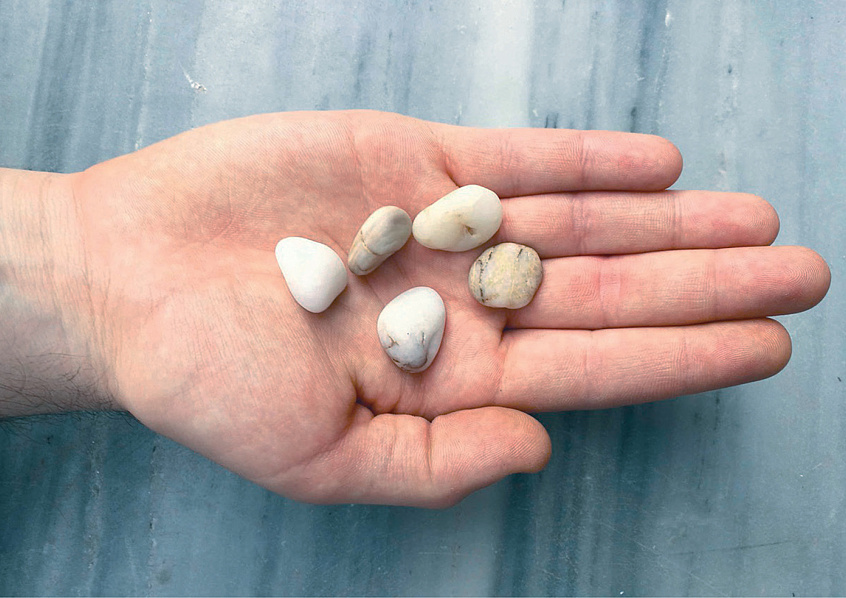Drum, a table. Chairs, a string section. Resonating bodies: the forms that hold us, sounds that form us, forms we play in the artist’s music room [drum]. What artist? Nevin Aladağ. What room? The one that sounds [drum]. To furnish a room with a voice, to set the scene (for future sessions) with future instruments—is what Aladağ arranges in her Musikzimmer (Music Room, 2015– ). Her forms—furniture turned instruments, resonating and receiving and speaking bodies all at once—call for bodies [drum]: hands to beat the table [drum] or pluck the chair; bodies to bounce sound off; bodies for resonance, for reverberation, for resistance [drum]. Born in Turkey in 1972, living in Germany, Aladağ treats form [drum] as constant translation—a body [drum] that is transitory [drum], always. Her sculpture, video, and performance translates and transitions between form and function, sound and silence, movement and rest. Her work travels across formal and functional borders [drum], aesthetic and political categories [drum], through historical and ideological territories [drum]. She modifies objects as our bodies [drum] are modified; she situates objects [drum] as our bodies are situated; she furnishes rooms as our bodies need [drum] furnishings, need music [drum]. Period rooms or music rooms, court or parlor or club [drum]: the artist’s musical installations have variously evoked the bourgeois European musical salons [drum] of the sixteenth and seventeenth centuries and the more profane [drum] rebetiko clubs of late-twentieth-century Athens, with their bouzouki, their oud, and their daouli [drum]. How does one appoint a room? How to sit in a chair? How to produce a sound? How to produce a body [drum] among other bodies? How to play such borders? In past works Aladağ has traced other kinds of translation: the video Borderline (2014) offers the blue view from a boat, the pale wake of its path, and the ship’s GPS screen [drum], which charts the marine border between Greece and Turkey. On a split screen divided into a grid of four, City Language I (2009) offers the urban exterior itself as a kind of music room. A flute held out the car window is played by the wind; claves tumble down streets; a tambourine skates across the water behind a boat. The landscape as orchestra, room as ensemble, objects as apparatus, each thing as performance, possible [drum]. The body instrumentalized—an instrument. The instrument as form of rest or sound. The room (of the artist or the poem) as drum [drum][drum].
—Quinn Latimer
